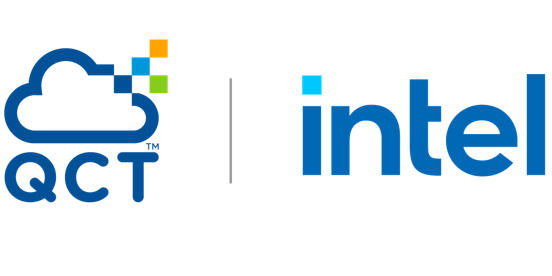It has been a little over two years since Seagate completed its acquisition of Xyratex. With new ClusterStor products in production and a broadened portfolio that includes IBM Spectrum Scale and the Intel Enterprise Edition for Lustre, the company is headed to ISC 2016 this month with growing momentum in the HPC space. To learn more, we caught up with Ken Claffey, VP & GM of the Storage Systems Group at Seagate.
insideHPC: For the sake of review, what’s new with Seagate on the HPC front since we last talked at SC15?
 Ken Claffey: Seagate has been busy shipping the products that we announced at SC15. The new SpectrumScale-based product, G200, is shipping and installed at a number of customers, including multiple Life Science research organizations where Lustre has traditionally not been widely deployed. The A200 Active Archive product is in late beta at a very large HPC research site and a government agency with production shipments scheduled next month. Our newest Lustre product, the L300, has been shipping since December and is now widely deployed, including major research sites and Oil & Gas customers. At LUG, we announced that Seagate and Intel will be working together to build a unified version of Lustre that will align the strengths of both companies to build a stronger foundation for Lustre.
Ken Claffey: Seagate has been busy shipping the products that we announced at SC15. The new SpectrumScale-based product, G200, is shipping and installed at a number of customers, including multiple Life Science research organizations where Lustre has traditionally not been widely deployed. The A200 Active Archive product is in late beta at a very large HPC research site and a government agency with production shipments scheduled next month. Our newest Lustre product, the L300, has been shipping since December and is now widely deployed, including major research sites and Oil & Gas customers. At LUG, we announced that Seagate and Intel will be working together to build a unified version of Lustre that will align the strengths of both companies to build a stronger foundation for Lustre.
insideHPC: Seagate offers ClusterStor for Lustre and IBM Spectrum Scale (GPFS). Does the ClusterStor architecture lend itself to that kind of flexibility while still maintaining performance?
Ken Claffey: Indeed it does. One of the benefits of our modular architecture is its flexibility – we can deliver a very comparable performance with either Lustre or Spectrum Scale on the same extensible architecture. There are two key reasons for that balance of performance and flexibility. Firstly, we have a unique scale out storage architecture with a distributed processing model, meaning you’re not tied to a centralized legacy RAID controller hardware. Secondly, there is no proprietary hardware or RAID firmware in the system. All the software runs in a standard Linux environment, so we are able to take our software stack and it is really agnostic as to whether we are running with Lustre or SS.
insideHPC: We are reading a lot recently about NVMe-based flash storage technology. What does Seagate offer in this area for high performance computing?
Ken Claffey: Seagate has a broad portfolio of all flash offerings bringing RAID subsystems to all flash Lustre and GPFS based systems. What we see from our customers is that they are less focused on a specific technology but more focused on how they solve their I/O related problems. For example is it a small file I/O problem, is it a sequential throughput problem or more of a random I/O problem? Seagate then has solutions and technologies to address all of these issues in the most efficient way possible.
New technologies like NVMe and 3D XPoint, Hybrid and SME Drives and our HPC drive are all part of the tiered HPC storage hierarchy. So, rather than being focused on a specific point technology, we are really focused on solving our customer’s problems by utilizing the industry’s broadest array of capability that spans from core technology of HDD, SSD to Systems and Software.
insideHPC: Seagate recently announced it will incorporate Intel Enterprise Edition for Lustre into the ClusterStor storage architecture for HPC. In such a scenario, who would provide first-line support?
Ken Claffey: The feedback to our announcement at LUG has been really great. Our customers – and I think the community at large – are really excited about us reuniting the original Lustre development teams that had basically splintered from Oracle into then Whamcloud and Xyratex. The collaboration that is springing from this reunification will give us the ability to jointly drive the Lustre roadmap forward and give our customers the best and largest pool of Lustre capabilities (Seagate Lustre Team and Intel Lustre team).
To specifically answer your question, Seagate supports the entire ClusterStor solution. There are many different pieces of software and of course hardware that make up a ‘System’. In most cases the issues customers see need to be triaged and are often based on complex interactions within the system. If you’re just supporting Lustre then who is supporting the rest of the stack? That is why a Seagate engineered system offers “one throat to choke” – meaning we will take all the support and then if there are specific Lustre issues that we ourselves cannot quickly turn around, we will escalate to the Intel Lustre team to collaborate on a fix.
insideHPC: What are your goals for the busy week at ISC 2016 in Frankfurt?
Ken Claffey: We want to spend time with our customers and partners to not only look ahead, but reflect on our achievements. We have been extremely successful in Europe, including our work on DRKZ & CEA with Bull as well as UK Met & ECMWF with Cray.
You can catch up with Seagate at booth #1220 at ISC 2016, which takes place June 19-23 in Frankfurt.



